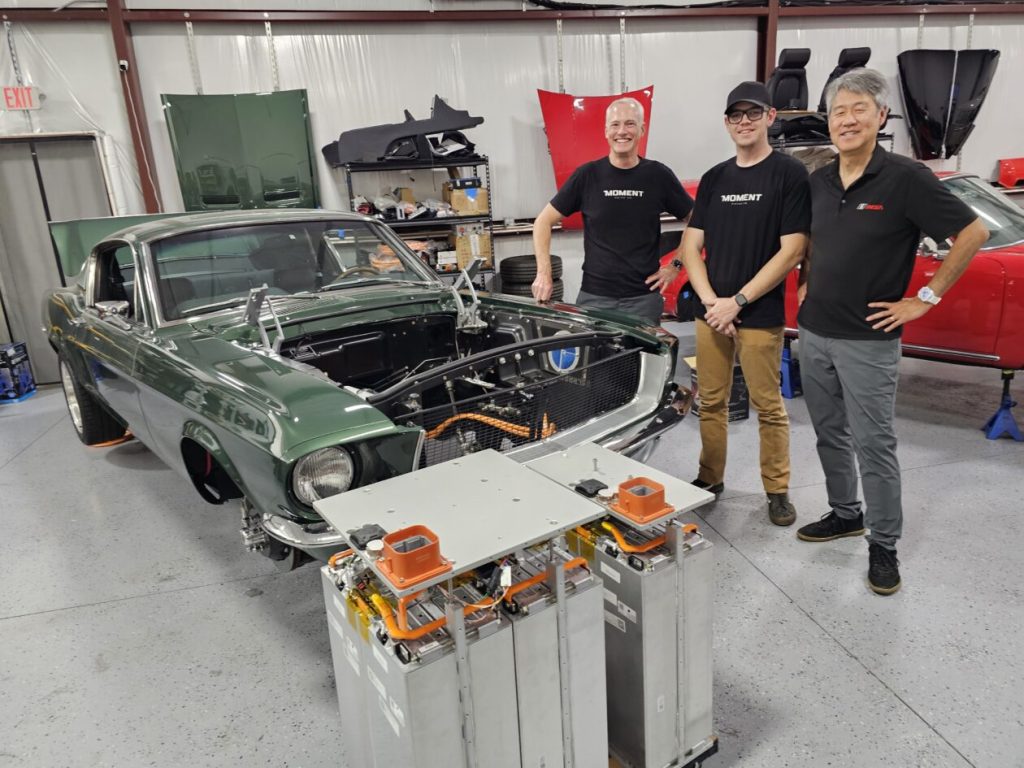From Tech Innovation to Classic Car Electrification: Peter Lee’s Passion Project
Peter Lee, the President of Microsoft Research, is a man whose technological vision extends well beyond the digital realm into the world of classic automobiles. By day, Lee leads Microsoft’s global research labs, driving innovation in artificial intelligence, computing foundations, and health sciences. But away from the office, he channels his creative energy into a pursuit that bridges his love of classic cars with modern technology: converting vintage automobiles to electric power.
Lee’s journey into electric vehicle conversion began with his replica 1955 Porsche 550 Spyder. Frustrated by persistent fuel system issues in 2020, he connected with Marc Davis, founder of Moment Motor Company in Austin, Texas – a specialized shop dedicated to transforming vintage cars into modern electric vehicles while preserving their classic aesthetics. When Lee initially used OpenAI’s Davinci-003 to help with the engineering design, the AI responded with surprising skepticism: “Why on earth would you want to ruin a beautiful classic car like that?” This reaction mirrors the divided opinions Lee regularly encounters from car enthusiasts. “Half the people I’ve told about this project think it’s the coolest thing, and the other half think it’s totally evil,” Lee explains with a touch of humor, adding that one critic even told him he’s “never going to heaven” for his automotive transformations. Such passionate responses highlight the emotional connection many feel toward classic cars and their original design intent.
Lee’s automotive passion runs deep, dating back to his childhood. Before his distinguished career at Microsoft and his 22-year tenure at Carnegie Mellon University, Lee raced karts and Formula Ford vehicles, and even worked as a licensed auto body technician. Now, he’s in the midst of his second major conversion project – a 1968 Ford Mustang GT Fastback. This extensive undertaking involves 100-150 hours of engineering work and 400-500 hours of installation, with costs ranging between $50,000 and $150,000 – a significant investment on top of a classic car that might already be valued at $200,000. For the Mustang project, Lee is deeply involved in every aspect, from aesthetic choices like shift knob selection to fundamental engineering decisions such as retaining the solid rear axle. “I ended up thinking that the car wouldn’t be a Mustang anymore if we got rid of the live rear axle,” Lee reflects, noting his alignment with the design philosophy of Moment Motors.
The benefits of electric conversion resonate strongly with Lee. Beyond the environmental advantages, he appreciates the practical improvements: no gas or oil maintenance, modern reliable components, and the exhilarating torque electric motors provide. The convenience is particularly valuable in the wet Pacific Northwest climate, where Lee’s Porsche remains garaged during winter at 50% charge. “On the first nice day in the spring, there’s little to fuss with,” he explains. “I’ll just check the air in the tires, turn it on, and it’ll just go. And it’ll go fast. It’s really a wonderful, wonderful thing.” Though Lee jokingly acknowledges that speeds in his electric Porsche – a replica of the model in which James Dean tragically died – can be “a little scary,” the performance capabilities clearly bring him joy. While contemplating a possible third conversion project, perhaps an old pickup truck, Lee humorously glanced around and asked, “My wife isn’t around is she?”
For Lee, this pursuit brings satisfaction that differs fundamentally from his work in software development. “The thing I’ve always loved about cars, and why I love to work on cars, is you actually finish something,” he explains. “That never happens in software. Software’s never done. You might ship it, but you’re still working on it forever.” This tangible completion provides a rewarding contrast to the perpetual evolution of software projects. Beyond personal fulfillment, Lee sees growing business potential in the classic car electrification market. “The whole idea of beautiful, classic-looking cars that have all the modern conveniences of being EV – I think that’s going to be a bigger and bigger thing,” he predicts, expressing interest in potentially becoming more involved with companies in this emerging field. Davis, the founder of Moment Motors, shares this perspective despite the “vomit emojis” their work sometimes generates from purists on social media. “I personally believe what we’re doing is preservation,” Davis asserts, highlighting projects that breathe new life into cherished family vehicles.
Perhaps most fascinating is how Lee’s automotive passion cross-pollinates with his professional research. After years of wanting to combine these interests, he now finds himself in an era where automotive technology and his research field naturally converge. He describes cars as “a great laboratory” for understanding action models – AI systems designed to predict and determine optimal actions toward specific goals. The advancements in automotive software provide valuable insights into action model architecture and training paradigms that could eventually impact everyday computing. “It wouldn’t surprise me if five years from now the ’68 Mustang conversion has more intelligence, more self-drive, more action model, more robotic capabilities,” Lee predicts. “I think you’ll see those things pop up even in your plain old Windows desktop over time.” This perspective illustrates how Lee’s out-of-office passion isn’t just a hobby but a complementary avenue for innovation that enriches his contributions to Microsoft Research, where he was recently recognized as one of Time magazine’s 100 most influential people in health and life sciences for 2024. Through his classic car conversions, Lee embodies the intersection of preservation and progress, demonstrating how technological evolution can honor the past while embracing the future.


